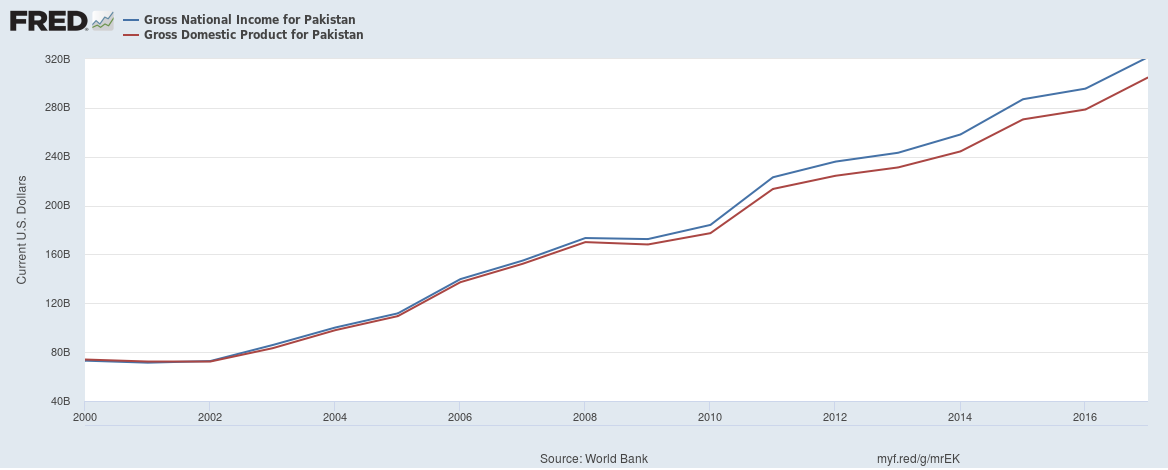Gross National Income
Gross national income (GNI) is a measure of income earned by a country’s nationals/residents anywhere in the world. It equals gross domestic product (GDP) plus net factor income from abroad.
GNI is also sometimes referred to as gross national product (GNP) but GNI is the term used by major international agencies such as World Bank, OECD, etc.
World Bank defines GNI as: “GNI measures the total domestic and foreign value added claimed by residents, and comprises GDP plus net receipts of primary income (compensation of employees and property income) from nonresident sources.”
In an increasingly more integrated world economy, many businesses that operate in a country are owned by foreigners and the income they earn accrues to foreigners. Similarly, its own nationals also hold stakes in businesses that operate in foreign countries and they repatriate the income they earn abroad. If we are interested in finding out the income of a country’s nationals regardless of its geographical source, we need to work out GNP.
GNI is derived from gross domestic product i.e. it is calculated by subtracting the income earned by foreigners from GDP and adding income earned by a country’s nationals abroad using the following formula:
GNI = GDP + R − P
Where GDP refers to the gross domestic product, R stands for receipts from abroad i.e. income earned by nationals abroad, and P is the payments to foreign countries on account of factors of product.
GNI vs GDP
Gross domestic product (GDP) is an indicator of income generated without geographical boundaries of a country. It equals the sum of personal consumption expenditure (C), private investment (I), government spending (G), and net exports (which equals exports (X) minus imports (M)).
Y = C + I + G + X – M
GNI is calculated by adjusting GDP as follows:
Y = C + I + G + X – M + R − P
GDP measures total production within geographical boundaries of a country achieved during a period while GNI is a measure of income generated by residents of a country regardless of their geographical location. GDP is certainly a more popular measure of income, but GNP is useful if we are interested in finding out a country’s tax potential, its residents’ affluence i.e. disposable income, etc.
Example
Many developing countries with large populations, such as India, Pakistan, Philippines, have GNP which is higher than their GDP. It is because a significant portion of their nationals work abroad and send remittances to their home country.
The following chart shows a comparison of GDP and GNP of Pakistan since 2000:

Countries at the other end of income spectrum i.e. those with high GDP per capita, such as US, Germany, etc. have relatively higher GNP too. This is because many of their large companies are multinationals which generate income from all around the world.
by Obaidullah Jan, ACA, CFA and last modified on